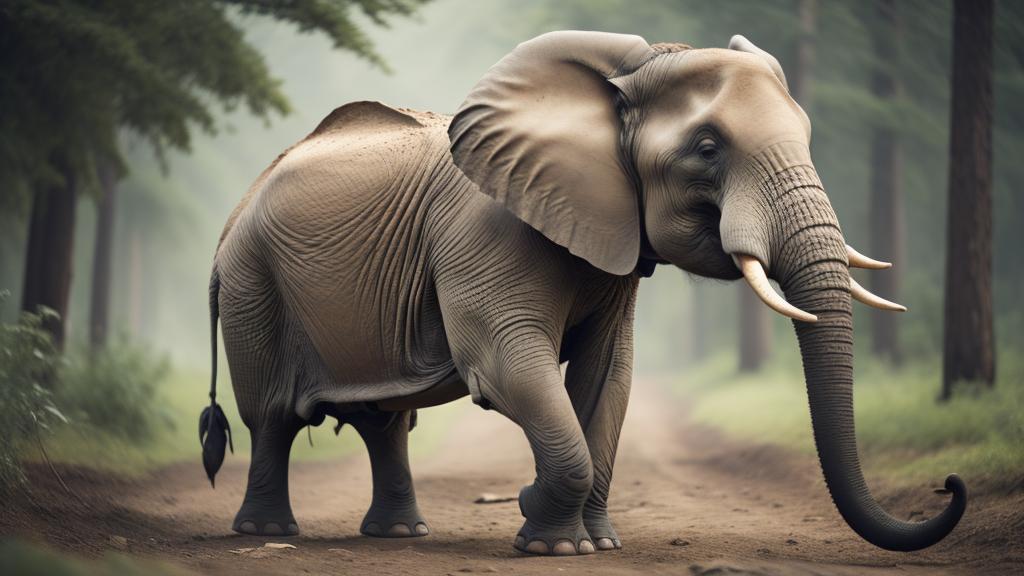Have you ever wondered what goes on in the hidden lives of animals when humans aren't watching? From the jungles of Borneo to the depths of the Atlantic Ocean, animals engage in fascinating behaviors that often go unnoticed. Here are some intriguing animal facts that will leave you amazed and wanting to learn more about our planet's incredible biodiversity.
### The Social Lives of Elephants
Elephants are known for their intelligence and strong social bonds. What you might not know is that female elephants form close-knit matriarchal societies. They communicate using a complex system of vocalizations and physical gestures. The older, more experienced females lead the groups and play a crucial role in their social structure. These matriarchs are responsible for the survival and well-being of the herd, teaching the younger members essential survival skills. Researchers have even observed elephants mourning the death of a herd member, showing signs of grief and emotion that rival our own.
### Dolphins: The Ocean's Brainiest Mammals
Dolphins are often hailed as one of the most intelligent animals on Earth. They have an extensive vocabulary of clicks, whistles, and body postures that they use to communicate with one another. Dolphins are also known to cooperate with humans in certain fishing practices, a behavior that showcases their incredible problem-solving abilities. Interestingly, dolphins have been observed using tools, such as marine sponges, to protect their snouts while foraging on the ocean floor.
### The Mysterious World of Deep-Sea Creatures
The deep sea, one of the least explored environments on Earth, is home to some of the most astonishing creatures. From bioluminescent jellyfish to the terrifying anglerfish with its luminescent lure, these animals have adapted to survive in total darkness and extreme pressure. Scientists have discovered species that glow in the dark, use bioluminescence to attract prey, and even communicate through light signals. These adaptations highlight the incredible diversity of life that thrives in conditions where most organisms would perish.
### Crows and Ravens: The Birds With a Mind of Their Own
Crows and ravens are members of the corvid family, known for their remarkable intelligence and problem-solving skills. These birds are capable of using tools, recognizing themselves in mirrors, and even planning for the future. Crows have been seen placing nuts on busy roads so that passing cars would crack them open, a behavior that demonstrates their ability to use their environment to their advantage. Studies have also shown that crows can remember human faces and hold grudges, warning other crows about dangerous individuals.
### Octopuses: The Silent Geniuses of the Ocean
Octopuses are often referred to as the "chameleons of the sea" because of their ability to change color and texture for camouflage. However, their intelligence goes far beyond their skin-deep disguises. Octopuses have been observed solving complex puzzles, escaping from sealed containers, and using coconut shells as makeshift shelters. These cephalopods possess a unique nervous system, with neurons distributed throughout their arms, allowing them to operate semi-independently. This setup enables them to perform coordinated movements and multitask with remarkable precision.
### The Complex Communication of Bees
Bees are vital to our ecosystem, playing a crucial role in pollination. But their importance isn't limited to their ecological contributions. Bees communicate using a sophisticated dance language known as the "waggle dance." By performing this dance, a bee can convey detailed information about the location, distance, and quality of food sources to other members of the hive. This form of communication is incredibly precise, demonstrating an advanced level of social organization and teamwork.
### Penguins: The Flightless Aerialists of the Sea
Penguins are unique among birds because they are excellent swimmers but cannot fly. They have adapted to life in some of the harshest environments on Earth, from the icy shores of Antarctica to the rocky coasts of southern Africa. Penguins have a highly developed sense of community, often huddling together to conserve warmth in freezing temperatures. They also engage in a range of vocalizations and physical displays to communicate with each other, reinforcing social bonds and coordinating activities like hunting and nesting.
### Conclusion
The animal kingdom is full of wonders that go beyond our everyday understanding. From the emotional depth of elephants to the problem-solving abilities of octopuses, animals exhibit a range of behaviors that challenge our perceptions of intelligence, communication, and social organization. Taking the time to learn about these incredible creatures not only enriches our knowledge but also deepens our appreciation for the natural world.
The Secret Lives of Animals: Fascinating Facts You Never Knew

